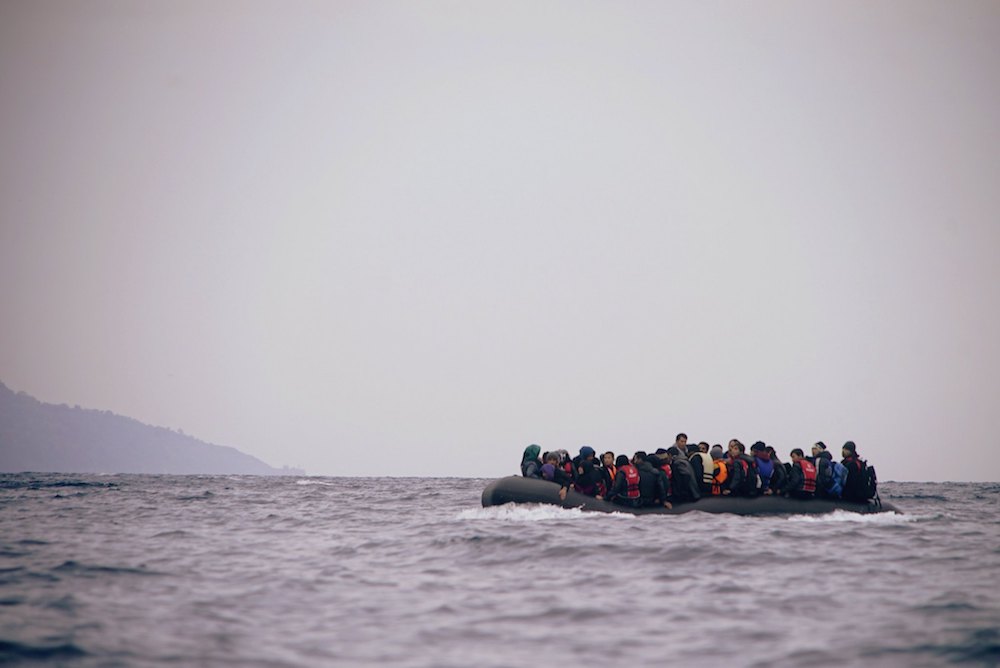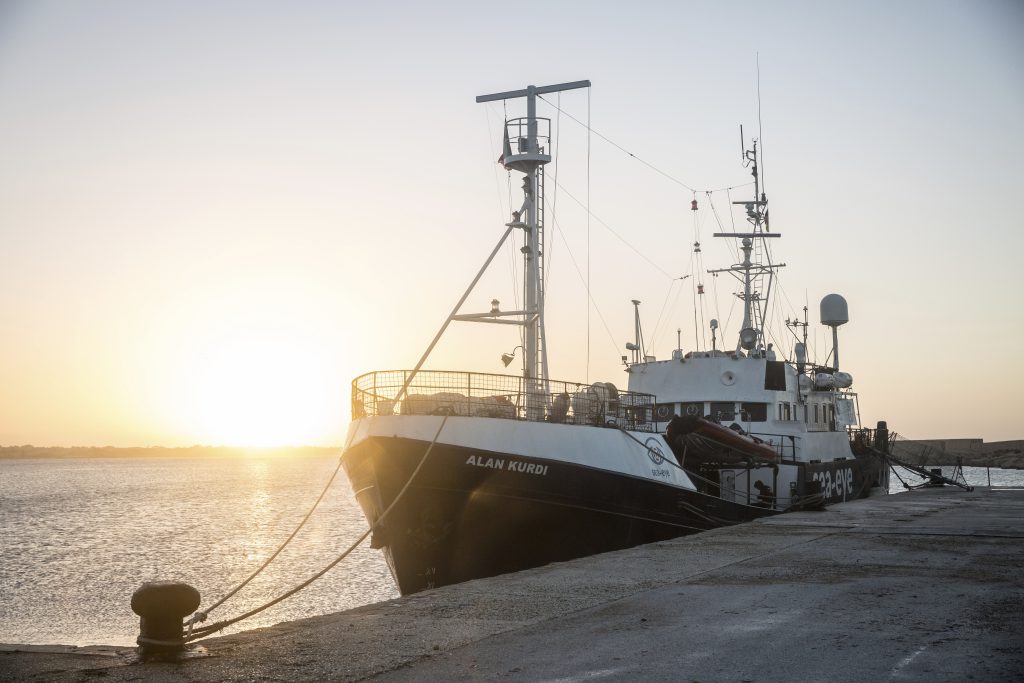Coronavirus Is Killing the Hope of Asylum
As orders to “stay at home” swept across the globe in March and April, some questioned what those mandates meant for people without a place to call home, such as homeless populations and those who live crowded into private and government-run assisted living facilities and prisons.
In many cases, we have seen the best of humanity rise to meet the challenges facing their communities: exhausted doctors providing coronavirus testing to the homeless in their off-hours, struggling restaurants donating food to the elderly from their kitchens, and people uniting to demand the early release of vulnerable populations behind bars.
But there is another population that should be considered in these questions—those who have fled their homes in search of safer shores. Who is rising to meet the critical needs of those without a community? The global response, or lack thereof, has shown just how invisible this population is to the majority of the world.
The novel coronavirus pandemic comes, tragically, at a time when our world has a record number of people who are displaced. Migrants, refugees, and asylum-seekers account for nearly one in every 100 people alive today. More than half of them are children. What does this pandemic mean for them, and what does it reveal about how “us” and “them” are defined in times of crisis, isolation, and unity?
As countries around the world grapple with an ongoing pandemic and dwindling resources, borders have been locked, search and rescue missions have largely been abandoned, and ports have been closed for the foreseeable future. The result is an already vulnerable population with nowhere to turn.
Stories about migration and asylum tend to focus on major land borders such as the ones that divide the United States and Mexico, and Turkey and Syria. But the most trafficked and deadliest border region in the world today is actually the Mediterranean Sea.
The majority of those attempting to cross it have fled conflict or extreme poverty in their home countries across the African continent and are seeking safety on European shores. Boarding inflatable rafts or small wooden fishing boats outfitted with salvaged motors along the coast of North Africa every day, thousands of migrants, refugees, and asylum-seekers place their lives at risk in hopes of surviving the final leg of their long, grueling journeys.
Those setting off from the Moroccan coast head north toward Spain—only 8 miles away at its shortest point—while those in Libya head out on longer, more treacherous routes to the closest European ports in Italy or Malta. Departures always increase in the spring when the risk of hypothermia drops and the sea calms. This year, departures have risen even higher than anticipated.
An increase in shootings and bombings over the last year in Tripoli, Libya’s war-torn capital city, has added to the number of springtime departures. In addition to being under siege, Tripoli is home to many who have traveled across Africa in hopes of crossing the Mediterranean.
Instead, these individuals are held in detention centers in Libya, often until their families are able to pay the high fees demanded for their release. The brutality against detainees at these centers has been well-documented. This population is desperately seeking to escape not only the homes they fled, but now the transit country—in this case, Libya—where they are trapped and vulnerable to abuse, rape, extortion, and forced labor.
Even in the months before the coronavirus spread across the globe, the number of nongovernmental rescue ships patrolling the Mediterranean had significantly dropped. This was due, in large part, to recent cases in which independent search and rescue missions came under attack by European member states and individual captains were charged with human smuggling for their efforts to save lives. By March, in the midst of the pandemic, all but one organization, the German sea rescue organization Sea-Eye, had withdrawn from the waters.
This scenario has left the burden of search and rescue on the national coast guards that are tasked with patrolling the waters, or search and rescue (SAR) zones, surrounding their coastlines. The laws mandating these obligations are outlined in a number of international conventions, including both the United Nations Convention on the Law of the Sea and the International Convention on Maritime Search and Rescue.
Central to these international agreements are the mandates that all signatory nations have a rescue coordination center that works in cooperation with the coast guard and that “(1) survivors of distress incidents are provided assistance regardless of nationality or status” and “(2) ships, which have retrieved persons in distress at sea, are able to deliver the survivors to a place of safety.”
The inherent contradiction in permitting men, women, and children to die in the name of public health seems to be lost on government officials in both countries.
But in April, as news of COVID-19 dominated international headlines, few people took note that member states across the European Union were repeatedly failing to meet their international obligations for search and rescue, and were abandoning those who were stranded at sea.
In one shocking example, in mid-April, several nongovernmental organizations, including Alarm Phone, reported that four boats, carrying 258 migrants, refugees, and asylum-seekers between them, were in distress and that rescue coordination centers across southern Europe had not responded.
Alarm Phone, an NGO and hotline founded to notify authorities about people stranded at sea, received a call that one raft was quickly losing air after more than 30 hours at sea with a broken motor. Among the 63 passengers on board, including 10 women and three young children, were many who had fled years of abuse in Libyan detention centers after originally leaving their homes in Eritrea, Ethiopia, Sudan, and Somalia.
Another raft carrying 47 passengers had already been adrift for four days without food or water. Passengers included a pregnant woman and her 7-year-old daughter, five individuals who had lost consciousness due to dehydration, and many others in need of urgent medical assistance. The closest port for both rafts was Malta, which was finally within reach.
Like all countries, Malta is legally responsible for distress cases in its SAR zone. A failure to respond is a criminal act. In the absence of Malta’s action, citizens across Italy called on the country’s moral responsibility to save those in crisis not far from its shores.
But in an unprecedented decree in April, Italy—a country that has recorded the second-highest death toll from COVID-19—issued an official statement saying it would block the arrival of all rescue ships until the end of the pandemic, a date that remains unknown. “For the entire duration of the national health emergency caused by the spread of the COVID-19 virus,” the decree stated, “Italian ports cannot guarantee the requisites needed to be classified and defined as a place of safety.” Malta quickly followed suit, announcing it would no longer allow ships at its ports due to the increased risk of infection.
The inherent contradiction in permitting men, women, and children to die in the name of public health seems to be lost on government officials in both countries.
With Southern Europe closed, the only alternative was a return to North Africa. However, Libya’s internationally recognized temporary government, which is based in Tripoli, declared its ports unsafe for the disembarkation of migrants, refugees, and asylum-seekers due to violence in the capital.
The question remained: Where do the 258 people in search of safety turn? The only destination in sight for those in distress aboard the four boats was the Mediterranean Sea.
At last, after a week at sea, help arrived—at least for some. A ship operated by Sea-Eye came to the rescue of two of the four rafts. The German ship responsible for the rescue is named “Alan Kurdi” in remembrance of the 3-year-old Syrian boy who washed ashore after drowning in the Mediterranean Sea in 2015. His image quickly became iconic of the migrant and refugee crisis.
The Alan Kurdi, with a total of 150 rescued passengers and a full crew on board, then spent another week searching for a safe haven before being allowed to transfer passengers to a ferry near an Italian port. All remain on board as of the writing of this post; they tested negative for COVID-19.
The IOM reported that the third boat, carrying an estimated 75 people, landed in Ragusa, Italy, before being returned to its point of departure in Libya; the last of the four boats was intercepted by a commercial fishing vessel after being left floating in Malta’s SAR zone for a number of days. Five of the passengers were found dead on board, seven others were reportedly drowned, and the 51 survivors were soon returned to the Libyan Coast Guard in Tripoli. An eventual “rescue” by Libyan officials for these 126 means a return to the hell that those aboard had willingly risked their lives to escape.
Our current global situation makes me think back to the etchings found on a detention center wall thousands of miles away from the Turkish beach where little Kurdi washed ashore nearly five years ago. Imprisoned in an Australian detention center on the island of Manus, Papua New Guinea, a detainee wrote a letter from the perspective of a fellow asylum-seeker who had been beaten to death: “It’s OK, baby Aylan. It’s OK. Maybe the ocean wanted to tell you there is no one expecting you on shore.”
For the 12 left to die last month and the 126 returned to their cells, the question remains: Are we all in this together?



































